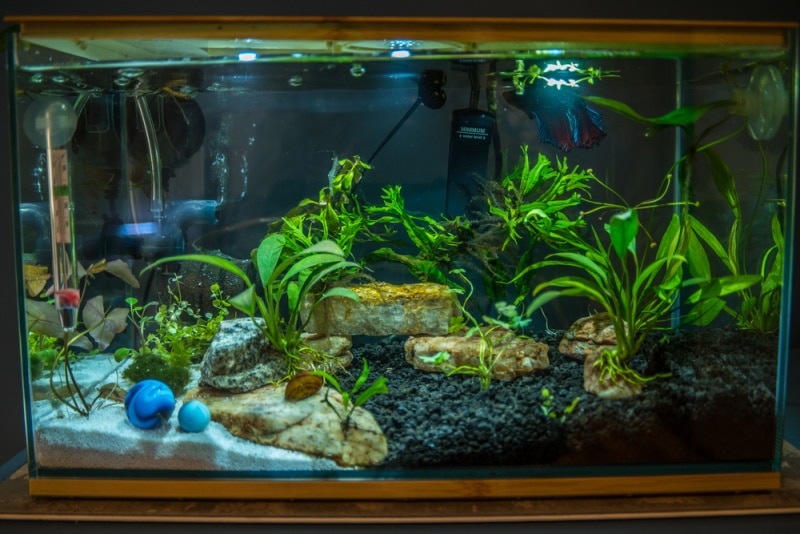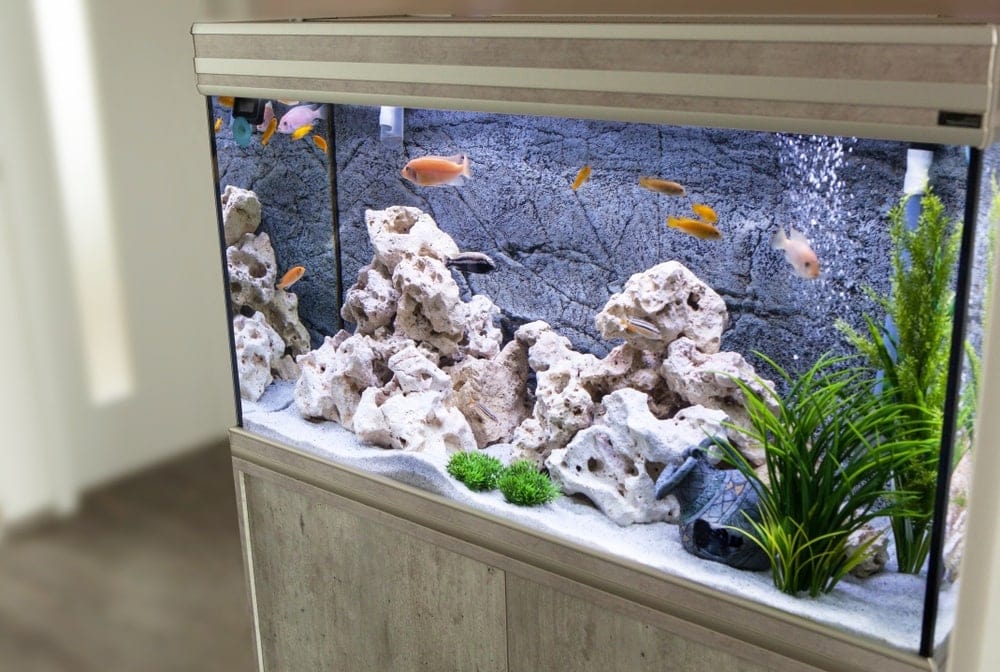6 Benefits of Ceramic Rings in Aquariums: Facts & FAQs

Updated on
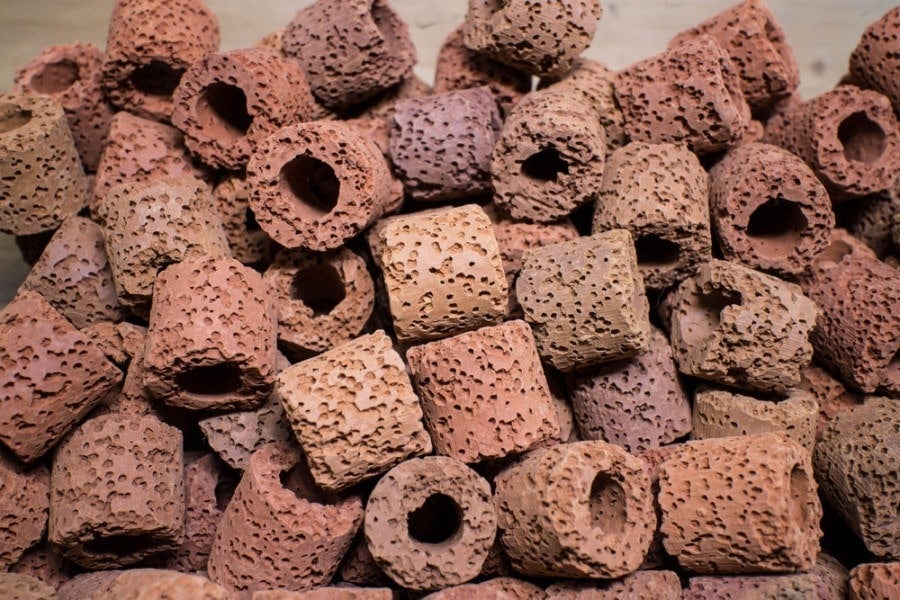
Aquariums all need good filtration in order for the fish to be healthy. One of the most important forms of aquarium filtration is biological filtration, something which is often performed by ceramic rings. So, what are they and what are the benefits of ceramic rings in aquariums? Essentially, these are porous pieces of ceramic that house beneficial bacteria which filter ammonia, nitrite, and nitrate out of the water.
What Is a Ceramic Ring?
When it comes to aquariums, ceramic rings are also often referred to as bio rings. These are miniature rings that look kind of like super tiny rolls of toilet paper, and, you guessed it, they are made out of ceramic. They are usually white in color but may also be gray, brown, or cream-colored.
These ceramic rings have many small holes on their exterior, plus they also have one large hole running right through the center. These holes create a very porous surface, thus allowing beneficial bacteria to adhere to them, to grow, and to help filter your water, something we will discuss in greater detail further below.
The 6 Benefits of Ceramic Rings
The fact of the matter is that ceramic rings do have many benefits for fish tanks, as well as for you. Let’s take a look at why exactly ceramic rings can be great for aquariums.
1. Biological Filtration
By far the biggest benefit that ceramic rings provide your aquarium with is biological filtration. Fish waste, uneaten food, and rotting plant matter releases ammonia into the water. Ammonia is very harmful to fish, and even low ammonia levels can kill your fish. This is why aquariums need to have beneficial bacteria present which perform biological filtration.
These bacteria turn the ammonia into nitrite, which is far less harmful to fish than ammonia. In turn, these bacteria will the further break down the nitrite into nitrate, which is far less harmful once again. Without beneficial bacteria in the tank, your fish will die. The whole point of ceramic rings is to house these beneficial bacteria, thus allowing for proper biological filtration and ultimately the survival of your fish.
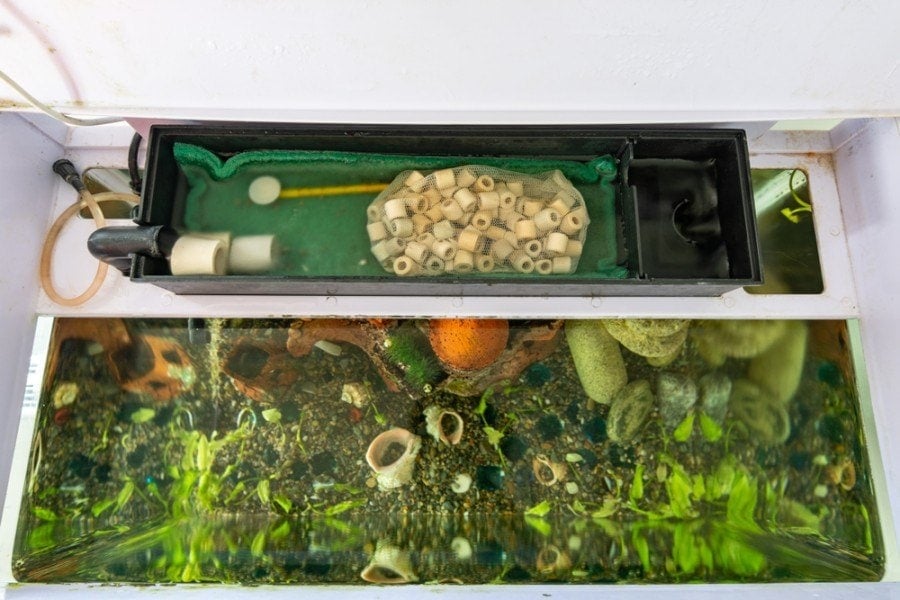
2. Denitrifying Bacteria
Something to note about ceramic rings is that they are generally considered better than other forms of biological filtration media. The reason for this is because ceramic rings can house two different types of bacteria, with these being nitrifying and denitrifying.
Many types of bio media can only hold nitrifying bacteria, which turn ammonia into nitrite. However, that nitrite is still harmful to fish and needs to be broken down further, into nitrate.
Denitrifying bacteria turn nitrite into nitrate, and this is needed for a fish tank. Therefore, ceramic rings are very good because they can house both of these types of bacteria.
3. They’re Affordable
Something else worth noting about ceramic filtration rings is that they are quite affordable. You can buy a good sized bag of them for a very limited cost, and they last for a long time. It’s a very cost effective way to ensure the optimal health of your aquarium and all of its inhabitants.
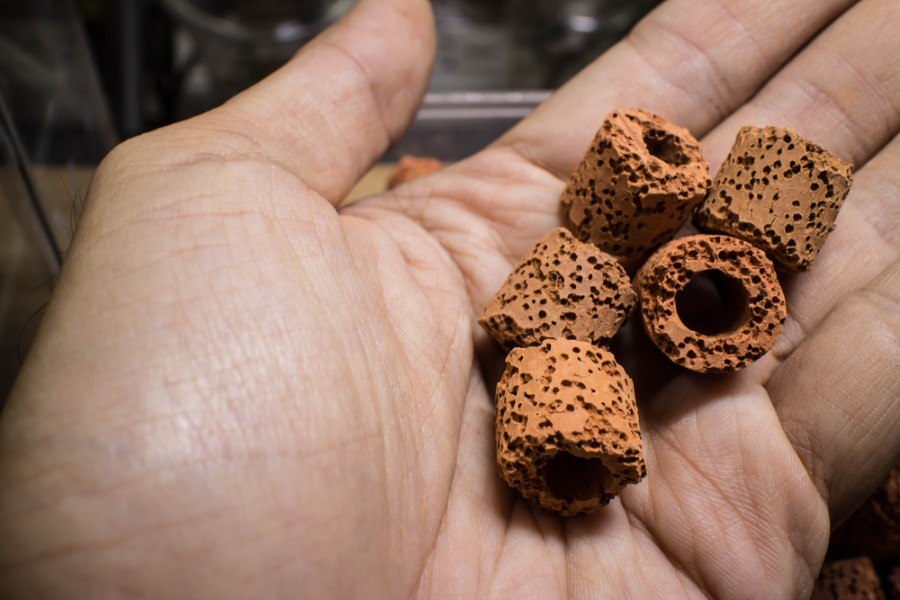
4. They’re Easy to Use
Another benefit that you get with using ceramic rings for biological filtration is that they are super easy to use. Literally, just pop as many of them as you can into your aquarium filter and you are good to go. It really does not get much easier than that.
5. They’re Long Lasting
As we discussed in the previous section, ceramic aquarium rings last for a very long time. Some say they need to replaced every 6 to 8 months, while some say that they should never be replaced at all.
If you treat them right, clean them occasionally, and take good care, a single purchase can last you for years to come, and that’s something that helps make life easier.
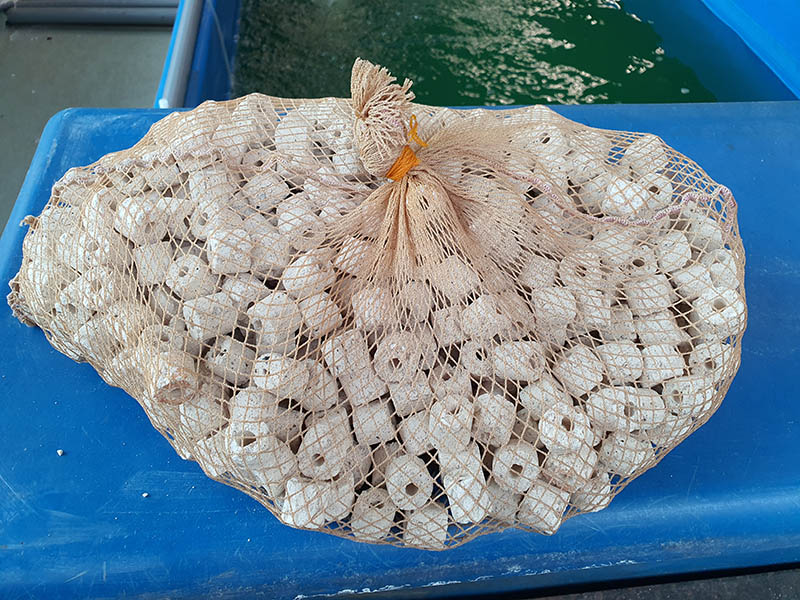
6. They’re Easy to Clean
The other benefit of using ceramic rings for bio filtration is that they are also easy to clean. Simply wash them off occasionally and that’s it.
How Long Do Ceramic Rings Last?
How often ceramic aquarium rings need to be replaced is a hot topic that sparks a whole lot of debate. On one hand, some manufacturers state that ceramic rings should never be replaced. The reason for this statement is because beneficial bacteria that filter the water build up on these rings, and these bacteria are essential for the health and survival of your fish. So, when you replace the ceramic rings, you are effectively removing the majority of the beneficial and life saving bacteria from the tank.
This can be very damaging to the health of the tank and often has negative consequences. It takes a good few weeks for the bacteria population to replenish itself, during which time your aquarium becomes susceptible to ammonia and nitrate buildups. However, other manufacturers recommend that ceramic rings in aquariums be replaced every 6 to 8 months.
The reason for this is because although ceramic is quite tough, it does wear down over time. The surface of the rings can become less porous over time as the water wears them down, thus resulting in a decreased ability to hold as many beneficial bacteria. Ceramic rings can also break.
How to Replace Ceramic Rings
If you get very high quality ceramic rings that can resist being washed out by the water (like rocks turning into sand), then you should never have to replace them. However, if you do need to replace the rings, you need to do it slowly and gradually.
If you remove all of the old rings at once and replace them with new ones, you just removed more or less all of those important bacteria from the tank. Therefore, you should aim to replace only half or even just one third of the ceramic rings at a time. This will allow the bacteria from the old rings to move to the new ones, to adhere to them, and to grow.
Once this is done, you can then replace the other half (or thirds). When you do this, wait for at least a week between changing one half and the other; just to allow enough time for the bacteria on the old rings to establish themselves on the new rings.
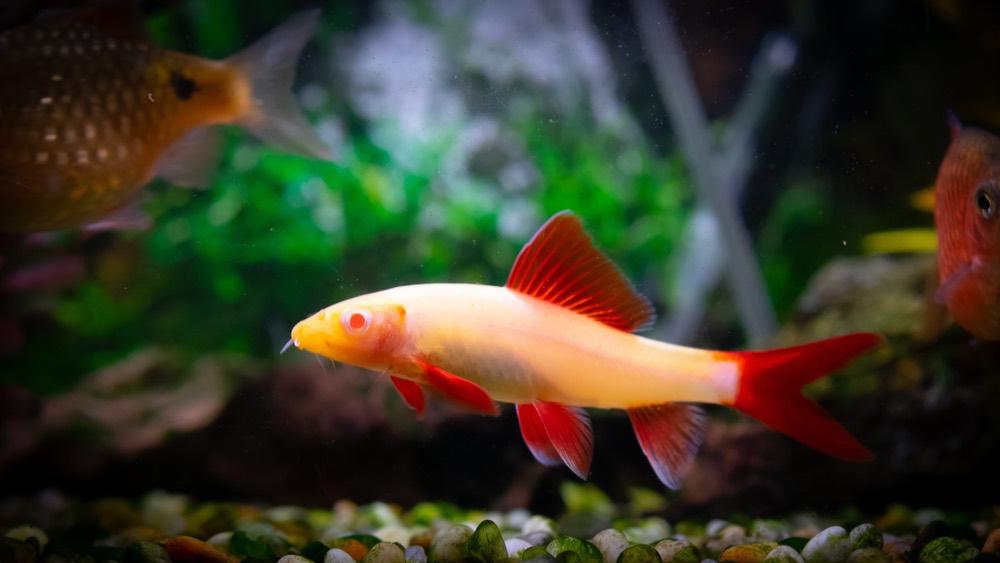
How Do You Add Ceramic Rings to Your Fish Tank?
Adding ceramic rings to your fish tank is also very easy. These are designed to be housed within your filtration unit. Each aquarium filter should have various sections for different types of media (mechanical, biological, chemical). This is where you will place the ceramic rings.
Keep in mind that some people use mesh bio bags to keep them all together, while others put them in the filter as is. It doesn’t really make a difference, at least not in terms of filtration efficiency. What you do need to do before putting them in the filter is to wash them off with dechlorinated water. You want to remove any and all dust and debris, but you don’t want to use chlorinated water, such as tap water, because this will effectively sterilize them and make it really hard for those bacteria to grow.
After that, the most important thing to remember is that the bio media – in this case, the rings – need to be placed in the filter after the mechanical filtration. You need the mechanical filtration media to remove any solid debris before the water gets to the ceramic rings or else solid debris will clog the rings and make them dirty. Also, the bio media needs to be placed before the chemical media.
How Do You Clean Ceramic Aquarium Rings?
Even if you do put the ceramic rings behind the mechanical filtration, the rings will still get dirty over time. Small debris will build up, clog the rings, and make it hard for substantial amounts of bacteria to be present. Moreover, when they get clogged, they will reduce the overall water flow of the filter and thus reduce the filter’s capability to clean the water. Therefore, you do need to clean these ceramic rings on occasion.
All you want to do here is to get a bucket and fill it with tank water. This is important. You want to use tank water that has been in the tank for a while, so cleaning ceramic rings is best done when you do water changes, as you will use that same water to clean them.
Under no circumstances should you use fresh water because this will get rid of much of the bacteria, which is bad. Simply pop the rings into the bucket of aquarium water and swoosh them around a bit to remove excess debris.
Remember, you aren’t scrubbing the rings here because you don’t want to remove bacteria. Swooshing in the water will do just fine. Also, realize that they won’t look overly clean when you are done. They won’t return back to their original color, but this is irrelevant as long as the majority of the solid debris is removed.
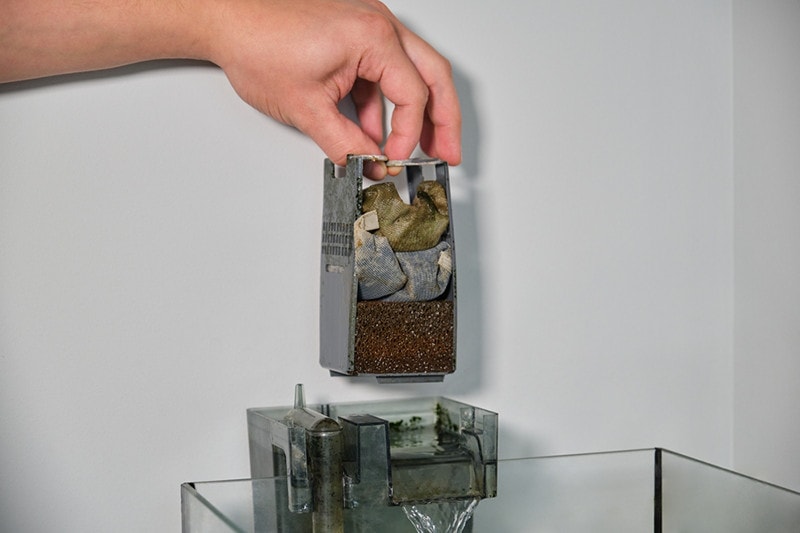
Which Is Better: Bio Balls or Ceramic Rings?
For those of you who don’t know, bio balls are very small and porous balls which serve the same purpose as ceramic rings, but they don’t have that hole running through the middle. There is no doubt about the fact that ceramic rings are much better to use than bio balls, and this is true for a variety of reasons.
One reason for this is because bio balls are not great at holding denitrifying bacteria, only nitrifying bacteria, and this is a definite drawback, as the cleanest and healthiest aquariums need both kinds. Moreover, because bio balls don’t have that large hole running through the middle like ceramic rings do, they get dirtier much faster, so debris builds up, they get clogged, and it will decrease your filter’s ability to engage in effective tank filtration.
Sure, bio balls work just fine, but they are not nearly as effective, long lasting, or easy to deal with as the ceramic rings.
Can I Use Ceramic Rings in a Saltwater Aquarium?
Yes, you can technically use ceramic rings in saltwater aquariums, as saltwater aquariums also require effective biological filtration. However, they are not commonly used in marine and reef tanks.
The reason for this is because in saltwater tanks, most people have lots of live rocks and corals which hold these beneficial bacteria. If your saltwater tank is properly set up, you don’t really need to add ceramic rings or much bio filtration at all.
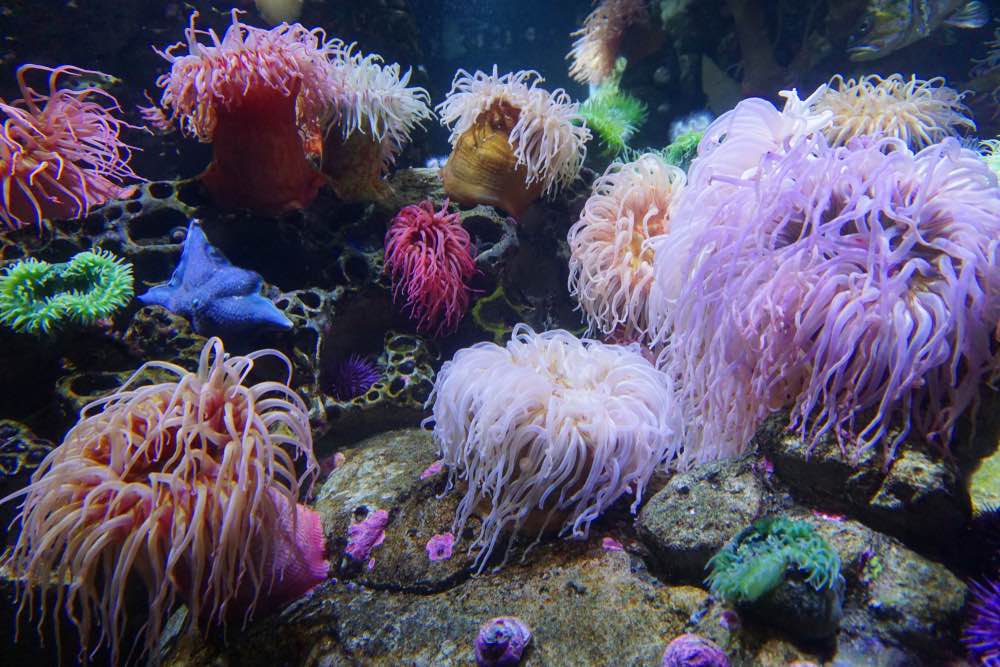
 Conclusion
Conclusion
The bottom line is that ceramic rings are quite likely the best form of biological filtration media that you can have in your aquarium. They’re easy to use and to clean, they’re affordable, they last a super long time, and they work wonders at eliminating all sorts of harmful substances from your aquarium.
Featured Image Credit: Chatchai Kuntrakornkiti, Shutterstock



 Conclusion
Conclusion
